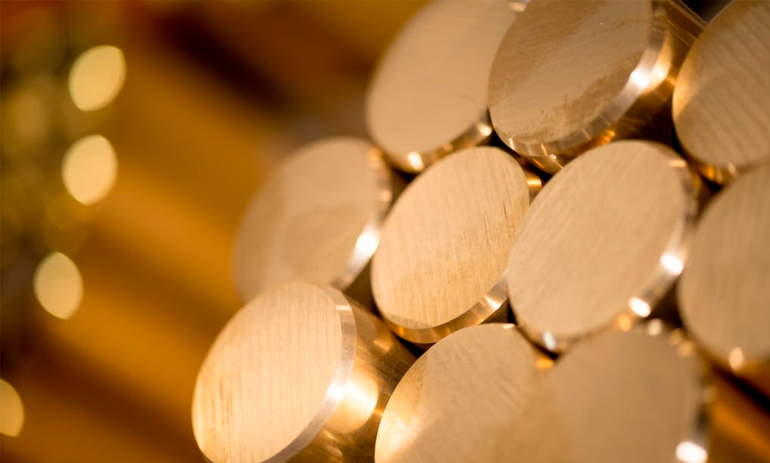
C47000
Naval Brass stands as a copper-zinc alloy in a 60:40 ratio, enriched with around 1% tin to bolster its corrosion resistance, particularly countering dezincification. This alloy adopts a two-phase alpha-beta configuration, granting it a relatively robust strength profile albeit displaying lower ductility compared to the single-phase 70:30 or alpha brass. Its application finds a stronghold in structural contexts and forgings, especially in scenarios where exposure to seawater might induce corrosion. The mechanical attributes of Naval Brass closely mirror those of 60:40 brass C28000, with the tin addition contributing to a slightly heightened strength. C47000 exhibits favorable responsiveness to hot working and is amenable to cold working as well, albeit not as seamlessly as the single-phase alpha brasses.
CHEMICAL COMPOSITION
| Elements | Min (%) | Max (%) |
| Cu | 57.00 | 61.00 |
| Pb | – | 0.05 |
| Sn | 0.25 | 1.00 |
| Al | – | 0.01 |
| Total Others | – | 0.40 |
| Zn | Remainder | |
MECHANICAL PROPERTIES ACCORDING TO UNS C47000
| Mechanical properties as agreed between purchaser and supplier. |
| PHYSICAL PROPERTIES | |
| Density | 8.9 g/cm³ |
| Fabrication Properties | |
| Technique | Suitability |
| Soldering | Excellent |
| Brazing | Excellent |
| Oxyacetylene Welding | Good |
| Gas shielded Are Welding | Fair |
| Coated Metal Are Welding | Not Recommended |
| Spot Weld | Good |
| Seam Weld | Fair |
| Butt Weld | Good |
| Capacity for Being Cold Worked | Fair |
| Capacity for Being Hot Formed | Excellent |
| Forgeability Rating | 90 |
| Machinability Rating | 30 |

